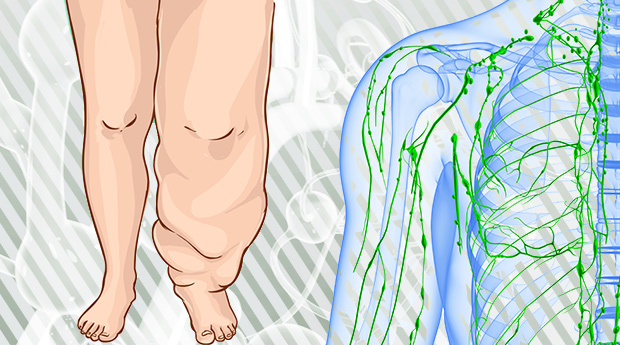March is Lymphedema Awareness Month. Those who have had conventional cancer treatment such as radiation therapy are always at risk for developing this sometimes debilitating condition. Breast cancer patients who have gone through radiation, chemotherapy, and especially lymph node removal surgery are at an even higher risk. Yet, breast cancer patients in particular often get mixed messages about their risk of developing lymphedema.
What is the real deal when it comes to lymphedema? And, most importantly, what can you do to make sure it doesn’t affect you?
Confusion About Lymphedema and Breast Cancer
A 2013 study came to the surprising conclusion that “the clear majority of women who undergo breast cancer operations worry about developing [lymphedema] and… this fear far exceeds their actual risk of getting [it].”
The study, which was conducted at the Mayo Clinic in Florida and published in the Journal of the American College of Surgeons, followed 120 women ages 52-68 for 12 months. 53 of the women had undergone Axillary Lymph Node Dissection (ALND), where lymph nodes are removed under the arm, and 67 had undergone Sentinel Lymph Node Biopsy (SLNB), where lymph nodes are removed from areas where the primary tumor is most likely to spread.
Even more shocking was their conclusion that “age, weight, type of breast operation (breast-conserving or mastectomy), or radiation were not linked to an increase in lymphedema.”
When I heard of this study, I was not only confused but also saddened and deeply concerned.
The fact is that lymphatic conditions affect millions of Americans each year and many of these individuals are recovering from cancer. Those who have received conventional treatment for prostate, uterine, neck or head cancer, as well as breast cancer patients who have had either ALND or SLNB, are especially at risk. According to the National Cancer Institute, between 5-17% of women who have SLNB will develop lymphedema. Of those who elect to have ALND surgery, the percentage is much higher − between 20-53%.
All experts agree that the number of lymph nodes removed is the greatest factor in determining lymphedema risk for breast cancer patients. For those who choose to have several or all their mammary-area lymph nodes removed, the lymphedema percentage shoots to 70%.
And in terms of other risk factors such as weight gain and radiation exposure, the Mayo Clinic study goes completely against what studies have concluded for years.
“Clinical studies have provided evidence that obesity and postoperative weight gain are significant risk factors for the development of lymphedema,” said a 2015 study conducted by Memorial Sloan-Kettering Cancer Center. And another 2015 study conducted by Massachusetts General Hospital found that women who had regional lymph node radiation (RLNR) had a significantly higher risk for getting the condition.
What Causes Lymphedema?
The Mayo Clinic report also stated that the most common at-home practices that women can do to prevent lymphedema from occurring, such as skin brushing and movement exercises, most likely have little or no effect. They go on to state that women (who, in their opinion, are worried mostly about disfiguration) “adopt practices that are basically grounded in myth, not fact.”
“Clinicians don’t really know what causes lymphedema, and there is an overall lack of data supporting or refuting these risk-reducing practices,” Sarah McLaughlin, MD, of the Florida Mayo Clinic and the lead author of the study, said in the final report.
First, what causes lymphedema, especially as it relates to cancer treatment, is clear. Besides the skin, the lymphatic system is the body’s most important line of defense for harmful pathogens such as bacteria, yeasts, viruses, and infection. Throughout the system, lymph nodes act as “filter stations” for these unwanted guests.
Lymph circulates throughout the system and transports the harmful substances to the nodes and then through detoxification pathways in the body. Lymphedema can occur after lymph node removal (or after lymph node damage occurs through radiation or chemo) because the lymph has nowhere to go or the nodes are weak and not working properly. Fluid can get trapped below the surface of the skin.
If this fluid stays in one place for too long, lymphedema can turn into inflammatory edema which can eventually lead to fibrosis. Fibrosis is a condition where the natural flow of nutrients and oxygen is hampered, allowing pathogens to run rampant.
The elimination of toxins is just one important aspect of the lymph system as a whole, however. The lymph nodes are also one place where important immune system substances, such as Natural Killer Cells, are created.
Whether or not to have lymph node removal surgery if you have breast cancer (or to commit to radiation treatment for any kind of cancer in areas where lymph nodes are present) is a deeply individual choice. One thing is for certain, however…
Modalities to externally process lymph fluid and to strengthen the lymph system in general have been around for thousands of years simply because they work.
7 Ways to Keep Your Lymphatic System Strong
Here are seven things you can do NOW to keep your lymph system functioning well:
- Practice Skin Brushing and lymphatic massage. This article on lymph system health can provide more details on these powerful Ayurvedic healing modalities.
- Use only all natural deodorants. Stay away from antiperspirants that use metalloestrogens like aluminum.
- Consider alternatives to mammography, which may damage the lymph area through excessive pressure and radiation exposure. Thermography and breast self-exam are two great options.
- Drink plenty of filtered water every day.
- Learn about EFT or “tapping,” and commit to doing just 5 to 10 minutes every day. Tapping not only reduces stress; it also helps promote the flow of lymphatic fluids.
- If you are suffering from lymphedema already, consider using a pneumatic pump or compression chamber for the arms or legs. There are several quality machines on the market and many are covered by insurance.
- Most importantly, take the time to move your body every day in whatever way you can. Gently walking, dancing or rebounding for 20 to 30 minutes a day are all excellent − and fun as well!
Remember that lymph fluid is meant to flow, and lymph nodes are a vital part of this process. Whether your lymph system is compromised or not right now, be an advocate for your body and for the removal of harmful toxins by taking care of this important system.
Eat a cancer-healing, alkaline-rich diet, drink plenty of water, tap those lymphatic points, nurture yourself through dry brushing and massage, and be sure to move a little bit every single day!
Please help bring more awareness about lymphedema prevention by sharing this important article with friends and family.
Article Summary
Prostate, uterine, neck or head cancer, and breast cancer patients who have gone through radiation, chemotherapy, and especially lymph node removal surgery are at high risk for developing lymphedema.
Experts agree that the number of lymph nodes removed is the greatest factor in determining lymphedema risk for breast cancer patients.
The lymphatic system is the body’s most important line of defense for harmful pathogens such as bacteria, yeasts, viruses, and infection. Throughout the system, lymph nodes act as “filter stations.”
Lymph fluid circulates throughout the system and transports harmful substances to the nodes and then through detoxification pathways in the body. Lymphedema can occur after lymph node removal (or after lymph node damage occurs through radiation or chemo) because the lymph fluid has nowhere to go or the nodes are weak and not working properly. Fluid can get trapped below the surface of the skin.
Modalities to externally process lymph fluid and to strengthen the lymph system in general have been around for thousands of years simply because they work. Here are 7 ways to keep your lymphatic system functioning:
- Practice Skin Brushing and lymphatic massage
- Use only all natural deodorants that don’t contain aluminum
- Consider alternatives to mammography such as thermography
- Drink plenty of filtered water
- Learn about EFT or “tapping”
- If you are suffering from lymphedema already, consider using a pneumatic pump or compression chamber for the arms or legs
- Take the time to move your body every day in whatever way you can




















Thanks Dr V- she is also on the cansurviving site too, which has loads for body, mind and spirit in an internationally built group set of forums – once you have lymphodema (as I have following a mastectomy and I am NOT overweight)) I’d like to suggest that daily exercise plus specific arm movements each morning have helped me hugely, also acupuncture…off to see my acupuncturist now, do give the site a look too…
I hope folks also view the article I wrote for TTAC questioning the NEED for axillary lymph node dissection. I am a Patient Advocate, the founder of Annie Appleseed Project, an all-volunteer cancer nonprofit , a 24 year breast cancer survivor (no chemo, no radiation).
I believe the lymphatic system is too important to destroy on a search for ‘random’ cancer cells. Check it out!
Ann Fonfa how did you treat your own breast cancer without conventional treatments such as chemotherapy and radiation therapy? What stage of breast cancer were you in?